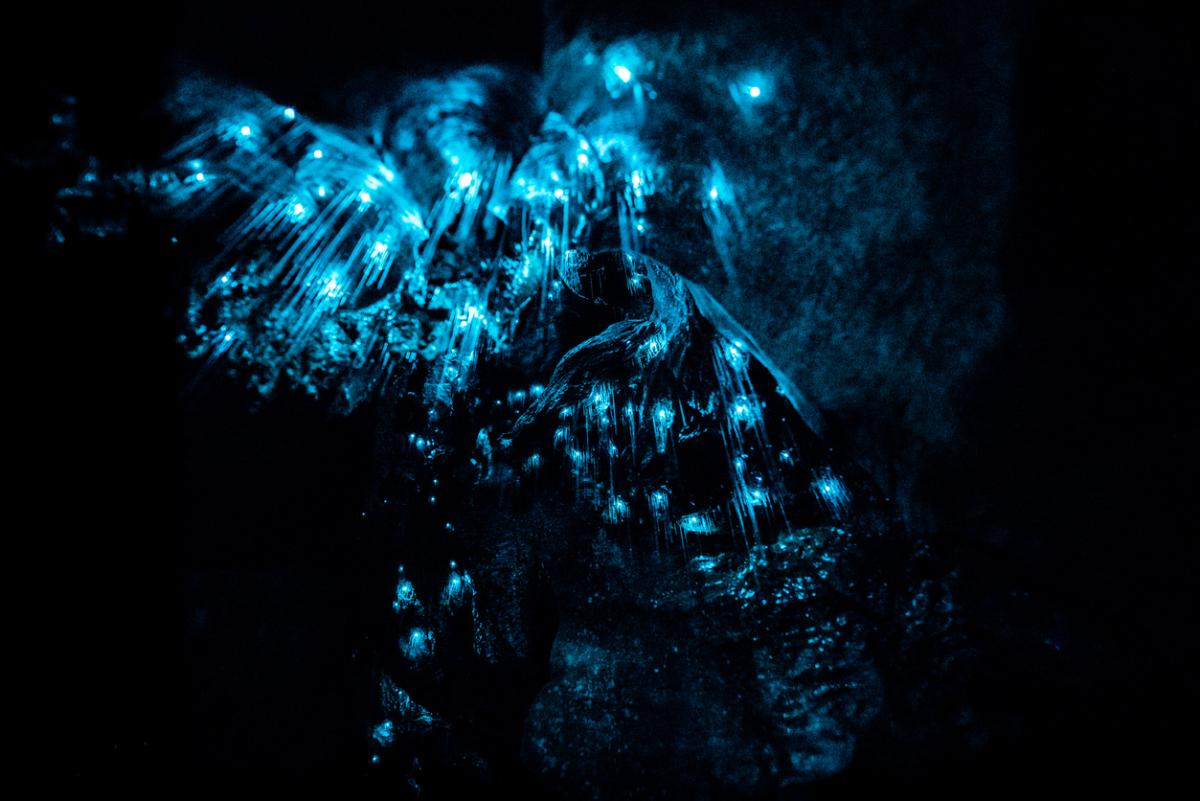Ecocentricity Blog - The Science of Stuff: How Biomimicry Can Improve Materials Science
By: John A. Lanier

Ecocentricity Blog - The Science of Stuff: How Biomimicry Can Improve Materials…
There I was, a wet-behind-the-ears eighteen-year-old, traveling with my family across New Zealand during my summer break. We are nestled close together in a small boat that our guide gently propels with rhythmic paddle strokes. Gliding over still water, we see a cave up ahead. It’s our destination. Nearly silent, we drift into the cave, and darkness begins to envelop us. We go deeper, then deeper still. Finally, we are met with one of the most beautiful sights I have ever beheld. On the ceiling is a massive colony of fungus gnat larvae.
Glow Worm Caves
I’m not kidding - it was stunningly beautiful. Take a look for yourself. Those twinkling lights are each a baby Arachnocampa luminosa (sounds like a Harry Potter spell), a carnivorous gnat species endemic to New Zealand. Caves like these exist in various places around the country, so many tourists visiting New Zealand will find themselves on one of these guided trips. It’s a pretty remarkable experience, and one I highly recommend.
Here is what’s going on with these little critters. When they hatch out of their eggs, the larvae inch their way up to the ceiling to begin spinning a silk nest. Once they have got their crib all set up, it’s time to go fishing. They drop a few silk lines down from the ceiling, slather them with a mucus-like material, then they go back to the nest and shine their light (and who knows, maybe set up a lounge chair, put their feet up, and crack open a beer). Other even tinier insects then see the lights and are drawn to them, getting tangled in the sticky lines. The larval gnats pull in their prey and chow down.
Glow Worms and Materials Science
Consider, for just a moment, the materials science at play on the ceilings of those caves. An organic life form, immediately after birth, is able to synthesize a bioluminescent enzyme in its body. On top of that, it can also create a silk-like thread that it then extrudes from its body. But wait, there’s more! It can then create sticky droplets to affix to those threads, making them suitable traps for its prey. And it does all of this instinctively and in a body that measures about five millimeters in length.
Imagine giving that design challenge to an engineer. “Within a half-centimeter of space, you need to create a machine that manufactures both textile threads and an adhesive while also serving as its own lightsource…………oh, and two more things - it needs to function without electricity and source its supply chain from only locally-available materials.” Said engineer would scoff at you and say, “It cannot be done.”
And he or she would be right! We can’t build machines that have the precision, flexibility, automation, and elegance of organic lifeforms. Nature has us beat in pretty much every design challenge you could imagine.
Fortunately though, nature doesn’t gloat in her superiority. She invites us to witness her wonders, from the white coloration of a Cyphochilus beetle to the rock-hard claw of a mantis shrimp to the chemical-based language that nematodes use to communicate.
That’s the idea behind biomimicry, and if we choose to listen to her, nature will teach us. She can teach us many things, like how to capture energy from the sun, how to manufacture complex structures via self-assembly, and how to organize systems (or in her case, ecosystems). But the examples I linked to above focus on a different type of natural lesson - how biomimicry can help in developing new materials.
Biomimicry Is Like Teaching a Person To Fish
Humans have long utilized natural materials (bioutilization, if you will), whether it’s building homes out of tree trunks, creating clothing out of animal skins, or even synthesizing purple dye for kings out of sea snails (I see you, ancient Phoenicians). But, to flip an old analogy on its head, bioutilization is like getting a fish, instead of learning how to fish.
When it comes to materials science, we aren’t very good fishermen. Sure, we can make some amazing things, but goodness do they come with a cost. Now we can make buildings out of concrete instead of wood! Too bad concrete manufacturing is responsible for about 8% of global greenhouse gas emissions. Now we can make clothing out of plastic fibers instead of animal skins! Too bad those fibers shed and bioaccumulate in things like the fish and shellfish that humans eat. Now we can dye our clothes in pretty much any color of the rainbow, not just purple! Too bad these industries are incredibly polluting, especially of local water sources.
The Mindset Shift Necessary for Better Materials Science
When I think about the potential for innovation and technology to help solve the whole host of environmental challenges we currently face, I think materials science biomimicry will be foundationally important. Nature makes so much stuff, and we need to learn to be just as efficient, functional, non-toxic, and biodegradable with the stuff that we make.
In many respects, it’s a mindset shift. What if our materials scientists didn’t ask, “What’s technically possible if I push the limits of physics in my laboratory?” What if instead they asked, “What exists in the natural world that already does the job I’m hoping to develop a material to do?” Because in my book, the science that’s taking place in that cave in New Zealand is a thousand-times more impressive than what happens in a laboratory.
This blog is available weekly via email subscription. Click here to subscribe.
Ecocentricity Blog: The Economics of Coal Burning Simply Do Not Pencil Out

